From the available evidences, it seems fairly certain that the concept of the mattress originated during prehistoric times. By lying on piles of leaves, straw, and animal skins, early humans were able to sleep more comfortably and more soundly than they could have on hard surfaces.
To a large extent the development of the mattress is closely linked with that of the bed. In many ancient societies, the bed was considered the most important piece of furniture in the household; often, it provided a central gathering place for dining and relaxing as well as sleeping. Over the centuries, bed frames became more elaborate for those who could afford luxury; however, mattresses themselves remained unsophisticated-and uncomfortable.
Until the twentieth century, they generally consisted of lumpy pads filled with horsehair, cotton, or rags. Poorer people relied on ticks -fabric sacks stuffed with straw, corncobs, or other crop debris.
In addition to offering an inconsistent texture, such primitive mattresses were difficult to clean-and they generally started out dirty, stuffed as they were with agricultural debris that often entered the pad or ticking with soil and insects. However, they offered one concrete advantage: made at home from castoff farm goods, they were cheap. Even late in the nineteenth century when small local manufacturers began to produce mattresses commercially, the items remained inexpensive because early mattress makers continued to rely on extremely inexpensive stuffing (usually, unusable fabric remnants discarded by second-hand tailors).
Mattresses with stabilizing interior springs, probably the single most significant advance in mattress design, were first developed during the mid- 1800s.
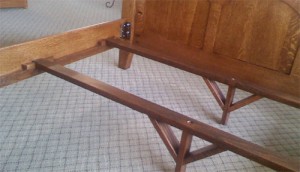 By placing a set of uniform springs inside layers of upholstery, mattress manufacturers could imbue their product with a firm, resilient, and uniform texture.However, because socalled innerspring mattresses were expensive to manufacture, only luxury ships and hotels that could pass the cost along to their affluent patrons purchased them initially. It was not until after World War I that innerspring mattresses were mass-produced by Zalmon Simmons, Jr., the president of a company that had theretofore produced bedsteads.
By placing a set of uniform springs inside layers of upholstery, mattress manufacturers could imbue their product with a firm, resilient, and uniform texture.However, because socalled innerspring mattresses were expensive to manufacture, only luxury ships and hotels that could pass the cost along to their affluent patrons purchased them initially. It was not until after World War I that innerspring mattresses were mass-produced by Zalmon Simmons, Jr., the president of a company that had theretofore produced bedsteads.
Despite the fact that Simmons asked 40 dollars-more than twice the cost of the finest horsehair mattress available at that time-for his innerspring mattress in 1926, his products proved so comfortable that millions of Americans purchased them. To render potential customers more willing to spend what must have struck many as a small fortune on his innerspring mattress, Simmons promoted the advantages of a good night’s sleep.
The effectiveness of this marketing strategy has only increased over the years, as subsequent research has confirmed that abundant, highquality sleep constitutes a fundamental component of good health. Today’s sophisticated mattresses improve sleeping comfort in several ways.
First, through a variety of enhanced innerspring designs, modern mattresses distribute the weight of the body over a broad area; this also helps to prevent differential wear on the mattress.
In addition, mattresses offer surfaces of appro-priate softness and flexibility to help keep the spine in its naturally curved position. However, contemporary mattress manufacturers carefully avoid excessively soft surfaces that would distort the position of the sleeper’s spine, resulting in discomfort or even pain. Presently, the consumer demand for mattresses is fairly consistent. In 1990, approximately 16 million mattresses were sold in the United States. Together with foundations, mattresses accounted for about $4 billion in retail sales.
Raw Materials
Mattresses are presently made of many materials, both natural and synthetic. The innerspring, helical, and boxspring components are made from wire; the boxspring wire is usually of a heavier gauge than that used in the innerspring. The insulator consists of semi-rigid netting or wire mesh, and the cushioning layers can comprise a number of different materials including natural fiber, polyurethane foam, and polyester. The flanges are made of fabric, and the hogs rings of metal.
Once the completed innerspring unit is received, workers manually apply the insulator. Next, they apply the cushioning layers that will determine the feel and comfort of the final product. Meanwhile, the decorative cover that will serve as the exterior for the top, bottom, and sides is made on a giant quilting machine, which controls a multitude of needles that stitch the cover to a layer of backing material.
Tape that holds the ticking together is made of heavy-duty, fibrous, synthetic material. The underlying boxspring may consist of either a wooden frame with slats or of metal coils similar to those used in the mattress itself. The boxspring may be upholstered, but, even if it is not, it always receives a fabric covering.
Building mattress layers
1) Most mattress manufacturers subcontract the production of the innerspring unit to an outside firm that specializes in making springs. Once the completed spring unit is received and inspected, the workers manually apply the insulator. Next, they apply the cushioning layers that will determine the feel and comfort of the final product.
2) While the mattress is being “built up” in one part of the plant, the decorative cover that will serve as the exterior for the top, bottom and sides is being made in another part. Usually this cover is made on a giant quilting machine, which controls a multitude of needles that stitch the cover to a layer of backing material. The stitching chosen serves both useful and ornamental purposes, as it must prevent the mattress cover from slipping or creeping over the layers of cushioning in addition to creating a visually pleasing exterior.
3) Once the fabric is quilted, it is cut into panels that will fit the top and bottom of the mattress. The side panels are often cut from this same composite or made separately on a border machine. If side handles or vents are to be added, they are attached to the side panels before these are applied to the mattress.
Attaching the flanges
4) Specially modified sewing machines are used to attach the flanges to the top and bottom panels, and the hogs rings are stapled to the flanges. Everything is now ready for the closing operation, during which the hogs rings will be secured to the innerspring unit.
Completing the mattress
5) The closing operation is of one of the most highly skilled and critical procedures in the entire process. It is done with a movable sewing head that is mounted on a track. Tape edge operators manually feed the top, bottom, and side panels and a heavy duty binding tape into the sewing machine as it moves around the mattress. As this combination of materials is fed into the machine, the operators use their skill to feed the proper amount of each material into the machine to produce a professionally tailored product.
6) Some of the highest quality mattresses may also feature a pillowtop, a panel filled with soft upholstery and attached to the top and bottom panels of the mattress for a more luxurious feel and appearance. Prequilted, the pillow-top is then taped to the mattress.
Boxsprings
7) If the desired boxspring has a spiked coil design, it is made by stapling the bottom of each coil to a flat wooden frame. A wire grid is then placed on top of the springs and, once aligned, manually locked to them.
Once the cover is quilted, it is cut into top, bottom, and side panels. Next, flanges are added, and hogs rings are stapled to them. Finally, in the closing operation, workers use a movable sewing head mounted on a track to feed the top, bottom, and side panels and a heavy duty binding tape into the sewing machine as it moves around the mattress. The mattress is then ready for packaging. It consists of a wooden frame that may or may not have a layer of upholstery that encases the top and sides of the unit. A border fabric that matches the mattress exterior is applied to the sides, and a dust cover is added to the face.
 SleepTech Magazine Mattress, Accessories, Machinery, Raw Materials
SleepTech Magazine Mattress, Accessories, Machinery, Raw Materials
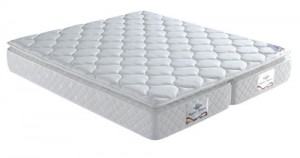
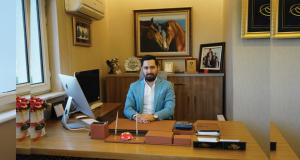
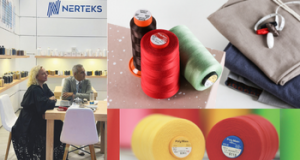
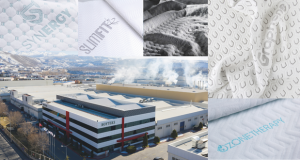
Heya i will be with the principal time period listed here. I stumbled upon this specific table and I to seek out Promoted handy & them solved the problem out and about a whole lot. I really hope to provide anything returning and aid other individuals like you made it easier for myself.